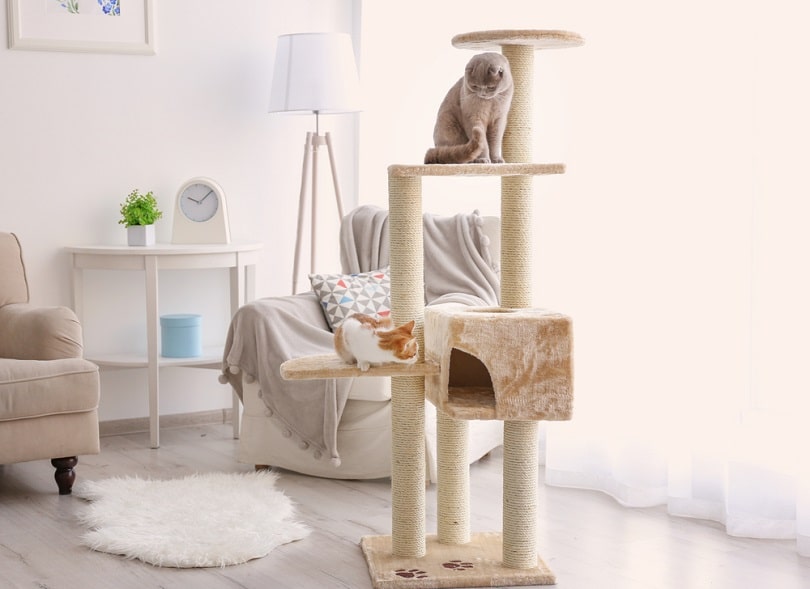
How to fix redirected aggression in cats?
What Is Redirected Aggression?
When an overstimulated cat is unable to get to what is causing them to become aggressive, they may lash out at people or animals in the vicinity. This is known as redirected aggression. For instance, cats may become agitated when they encounter creatures scuttling around outside. Redirected hostility might also result from sudden, loud noises. Attacks by cats can occasionally occur after the triggering events, making it challenging to determine what caused the behavior.
Although it can be erratic, this type of feline aggression is somewhat prevalent and is the cause of occasional feline attacks on members of the human family.
Because the aggressiveness is directed toward innocent people, it can lead to a breakdown in trust and major issues in family relationships. Finding the issue and fixing it requires time and work. Regretfully, cats that exhibit misdirected hostility are frequently placed in new homes. After a terrifying or triggering event, cats might remain on high alert for a considerable amount of time, and some require a few days to stabilize. When cats are still on high alert, attempting to interact with them might occasionally result in more assaults.

How to fix redirected aggression in cats?
What Are the Signs of Redirected Aggression?
If a cat is going to get hostile, you can tell by their body language. Cats that are on the verge of attacking can be identified by their crouching, ear flattening, flailing tail, and direct staring. In order to urge threats to move on, scared cats may hiss and enlarge their pupils.
Often, these problems can be resolved by relaxing cats and giving them space. When cats hiss, swat, or crouch in fear, it’s best to avoid interacting with them because this can lead to violence. We advise consulting a veterinarian if you have concerns about your cat’s behavior.
What Are the Causes of Redirected Aggression?
High-pitched stimuli, unfamiliar sounds, and new visitors can all set up redirected aggressiveness. It usually happens when cats can smell other cats on guests or loved ones, have trouble interacting with canines, get afraid after being outside (if they are usually indoor-only cats), or sight prey animals or other cats through windows.
There may be a connection between stress and misdirected aggressiveness, and stressed cats may find it more difficult to react appropriately to frightening situations. Cats who are constantly exposed to unfavorable environmental circumstances frequently experience stress.
To make sure there isn’t a medical issue underlying the behavior, cats that are acting aggressively should be checked by a veterinarian. The severity of the episodes and their trigger determine the course of treatment.
To treat more severe aggression, veterinarians and veterinary behaviorists can employ behavioral management and medicines. A desensitization program is typically recommended if the aggressive behavior’s trigger can be found. When the cat is calm and not excited, this entails exposing them to the trigger at progressively higher intensities. If it’s a sound, this can mean keeping the trigger farther away from the cat or starting it off at a low volume.
Referral to a behavior specialist is typically advised in order to customize treatment to your cat’s situation and triggers, as this approach requires patience and time.
How Do I Care for a Cat With Redirected Aggression?
Happy, healthy cats are less inclined to become aggressive. Luckily, pet parents can follow a few easy steps to help their companions feel more comfortable in their environments.
Provide High Perches
High perches provide
cats with places to go when they need space between themselves and something scary. Some cats feel more
comfortable when they can retreat to an elevated platform, and having access to cat trees and shelves can reduce stress.

Set Up Safe Places
Anxious cats benefit from having calm places to hang out where they can de-stress and get away from stressors before they become overwhelmed.
Placing your cat’s bed and toys in a quiet room allows them to escape to a comfortable spot when the house is too chaotic.
Is there anything better than a happy cat? We don’t think so—that’s where the Hepper Nest Bed comes in.
This product was designed with both your and your kitty’s happiness in mind. While the comfortable bowl shape and wide lip to rest their heads on are ideal for sleepy kitties, you’ll appreciate the removable and machine-washable fleece liner for easy cleaning.
Provide Hiding Places
Some cats respond aggressively due to fear and stress, but others hide in response to frightening situations. Having hiding places to retreat to is essential to creating a feline-friendly environment.
If your cat likes hiding under the bed, you can remove the items you’ve stored there to make it more inviting.
Increase Their Mental Stimulation
Cats can become stressed due to boredom and a lack of mental stimulation. Food puzzles and cat trees can keep them engaged, and playing with them with interactive toys like cat wands and teasers can help satisfy their natural predatory behavior.
Read also: The expected behavior changes of an older cat
 The First Encyclopedia Your First Knowledge Home
The First Encyclopedia Your First Knowledge Home
